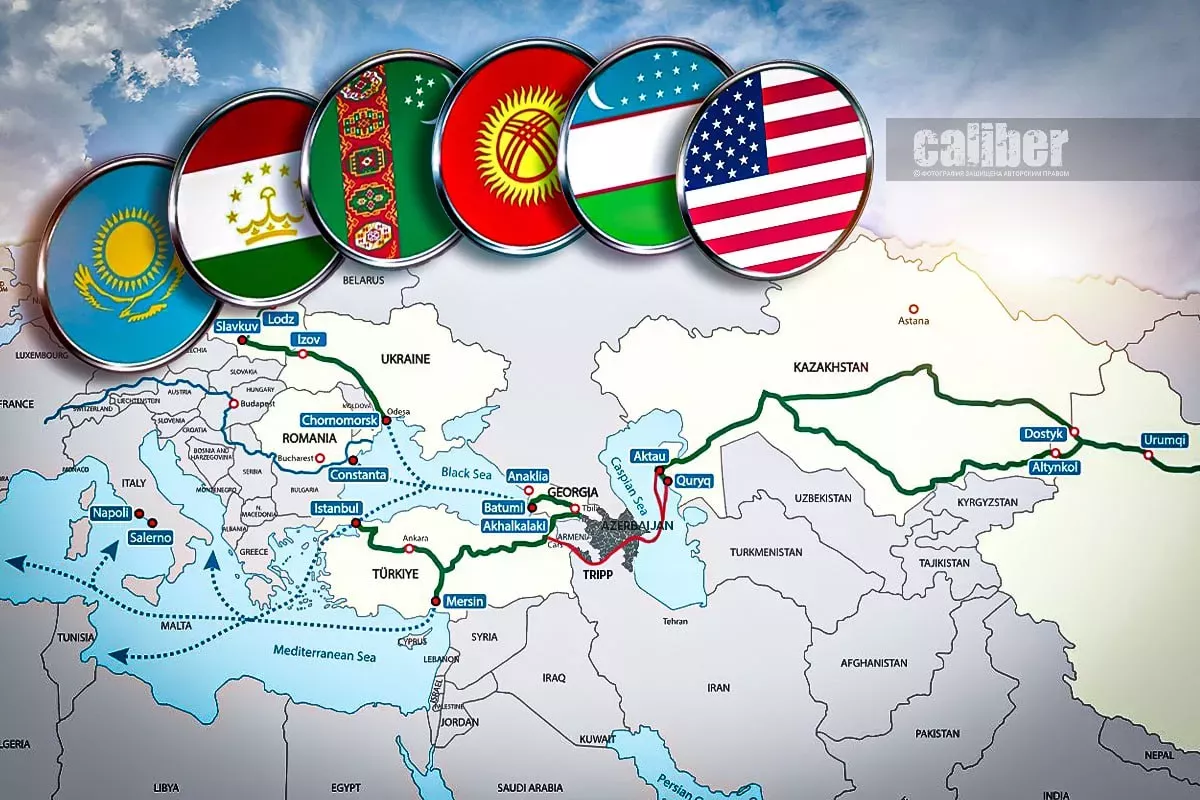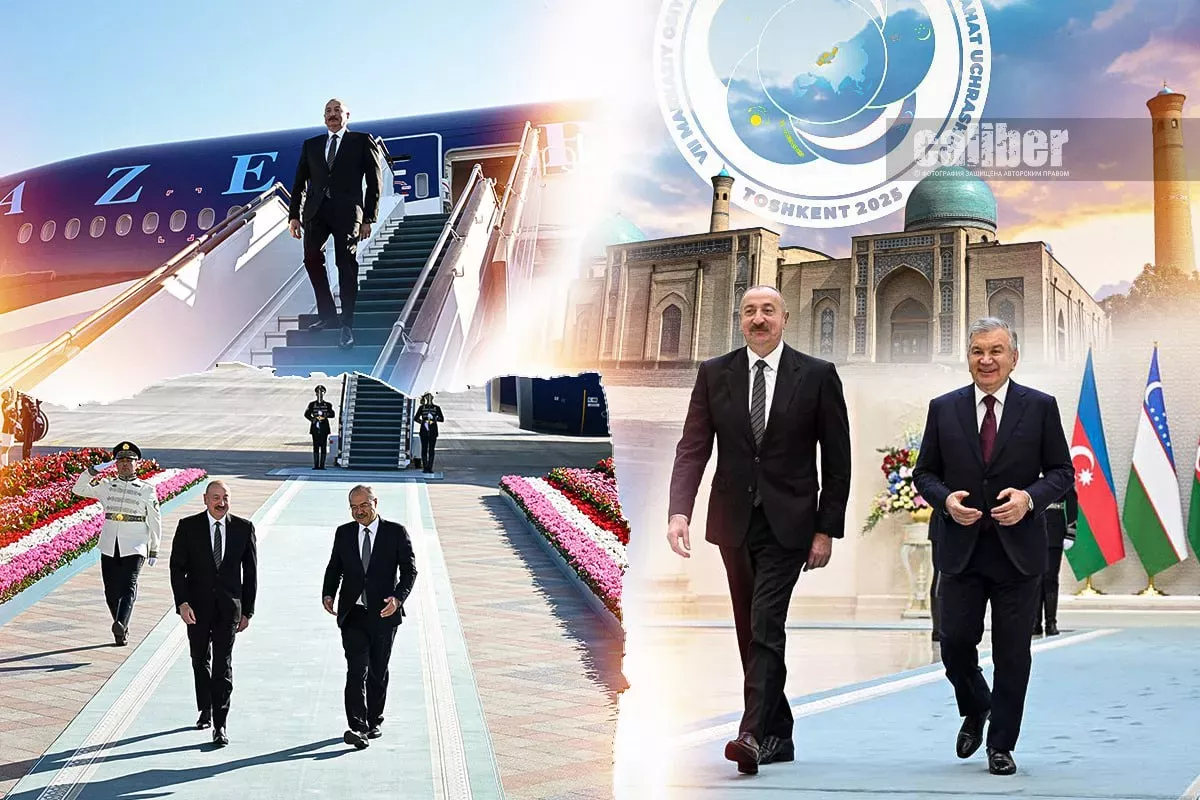The summit puzzle: Central Asia, Azerbaijan, and the world powers Article by Daily Sabah
The Turkish newspaper Daily Sabah has published an article on the rising geopolitical and economic significance of Central Asia. Caliber.Az brings its readers the most insightful excerpts from the piece.
Editor's note: The author of the article is Ahmet Turan, head of the International Relations Office at İnönü University.
In his recent article "Central Asia on the threshold of a new era" Uzbek President Shavkat Mirziyoyev states, “We are not building walls, we are building bridges.” These days, as Central Asia transforms into a new hub of attraction, it is not difficult to grasp the meaning behind Mirziyoyev’s words.
The countries of Central Asia have built unity upon the very issues over which they once disagreed. From the Khujand Declaration of March 2025, where Uzbekistan, Kyrgyzstan and Tajikistan resolved their border disputes, to the transformation of the energy disagreements among Uzbekistan, Kazakhstan and Kyrgyzstan into a joint strategic venture with the 2022 launch of the Kambarata Hydroelectric Power Plant project, all these unifying steps have begun to bear fruit today. One of the most striking examples is the dizzying intensity of diplomatic traffic along the corridors leading toward Central Asia.
2025: Year of summits
The EU-Central Asia Summit held on April 4, the first such meeting in the history of the EU, offered significant insight into the new direction of diplomatic engagement. At the summit in Samarkand, Uzbekistan, European Council President Antonio Costa’s remark, “Our partnership is a journey, not a destination,” served as an answer for those curious about where this process is heading.
Hosting cooperation negotiations on dozens of issues ranging from security to the economy, and from climate to human rights, the summit was a clear indication of Central Asia’s growing importance. One of the summit’s most concrete outcomes was the EU’s emphasis that the 10 billion euros ($11.5 billion) secured from the previous year’s Global Gateway Investors Forum would be crucial for establishing transport corridors, logistics, networks and value chains. The EU also agreed to support a coordination platform for critical infrastructure projects along the Middle Corridor, including the Caspian Sea transport corridor.
Meanwhile, at the China-Central Asia Leaders’ Summit held on June 17 in Kazakhstan's Astana, Chinese President Xi Jinping described what he called the “China-Central Asia spirit,” offering a distinctly Chinese interpretation of the region’s rising prominence. Much like the EU, China also loosened its purse strings for Central Asia, with Xi pledging 1.5 billion yuan (approximately $210 million) in financial assistance to the region.
Russia, another major actor closely involved with Central Asia, also convened with the region’s states on October 9 in Dushanbe, the capital of Tajikistan, mirroring the EU and China in diplomatic engagement.

The final piece of the Central Asia summit puzzle of 2025 was undoubtedly the one held at the White House in the U.S. on November 6. This gathering served as a significant indicator of the U.S.’ global standing. The key theme across all the above-mentioned summits was trade corridors.
It is widely recognized that the actor laying the foundational stones of Central Asia’s rising strategic appeal today is Türkiye. These days, both Central Asia and Azerbaijan have yet another major item on their agenda.
“A vivid symbol”: Central Asia-Azerbaijan summit
In his article, Mirziyoyev reinforced his use of the expression “vivid symbol” by noting that, for the first time in many years, an atmosphere of mutual understanding had emerged in the region. The seventh consultative meeting of the heads of state, held on November 16 in Tashkent, the capital of Uzbekistan, signified something more than its predecessors. Notably, Azerbaijan, though geographically outside the region, participated in the summit as a nation united by shared identity and political will. One of the meeting’s most striking decisions was the unanimous approval of Azerbaijan’s full membership in the consultative format.

During the summit, Azerbaijani President Ilham Aliyev praised the support of Central Asian countries for the reconstruction of Azerbaijan’s liberated territories.
Ultimately, whether within the framework of the OTS or the Central Asia-Azerbaijan format, the strengthening of cooperation among Turkic nations represents the emergence of a new power bloc on the international stage. It is, fundamentally, a diplomatic success for the states involved. As Henry Ford famously said, “Coming together is a beginning. Keeping together is progress. Working together is success.”








